A museum is a place for history. The National Crafts Museum in New Delhi displays handloom and handcrafted items collected over the years from various corners of India. But this place of history recently pulsated back to life with colours, textures, and stories at the exhibition “Gamchha: The Extraordinary in the Ordinary.” Walking into the space felt like stepping into a world where tradition met creativity in the most subtle manner.
Organised by Dastkari Haat Samiti, the exhibition wasn’t just about showcasing gamchhas-it was about celebrating their journey from a simple, everyday fabric to a cultural icon. With over 230 gamchhas from 14 Indian states and even Southeast Asia, each piece had a tale to tell—of heritage, craftsmanship, and a timeless saga that resonated with life every day.
Contents
What is a Gamchha?
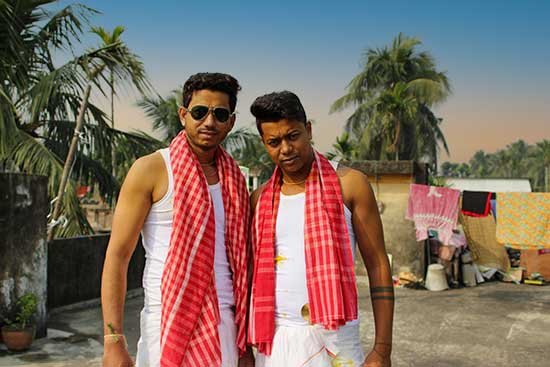
A gamchha is primarily the indigenous towel of India, especially Eastern India. It is a handloom cotton cloth, typically measuring 1-1.5 metres in length and 60-70 centimetres in width. Known for its lightweight and absorbent qualities. In its most common form, it carries check designs, although solid colours or striped patterns are not uncommon. The gamchha is an integral part of daily life in many Indian communities and is especially popular in West Bengal, Bihar, Odisha, and Assam.
Also Read:The Importance Of National Handloom Day
Origin of the Gamchha
The gamchha’s origins can be traced back to various regions across India, each with its unique weaving techniques and designs. The gamchha finds mention in the 9th-century text Charyapada, the earliest book of Bengali poems.
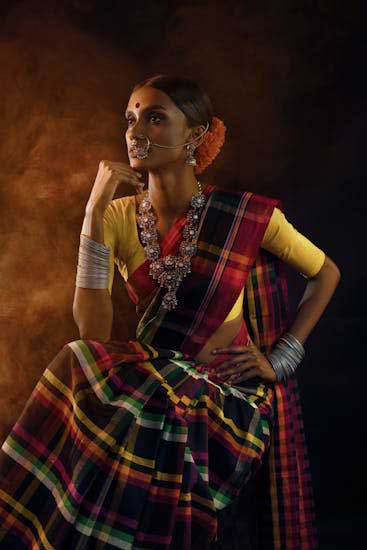
The word gamchha has been coined from the Bengali words “Ga”, which means “body”, and “Mochha”, which refers to the act of wiping.
In Bengal and Odisha, people call it gamchha, while in Assam, it’s known as gamosa. In Bihar and Uttar Pradesh, it’s called angochhi, and in Andhra Pradesh and Telangana, it goes by paigudda. Among the hand-woven gamchha varieties, every region adds its own touch to the fabric, creating unique patterns and colours that reflect local traditions.
Traditional Uses of Gamchha in India
The price of a gamchha can start from Rs 20 (roughly 25 US cents). That is a humble price to pay for any piece of cloth. And when you learn about the benefits of using a cotton gamchha, you would admit that every paisa you invest in a gamchha is money well spent.
- Towel: The soft cotton threads help in absorption and is ideal for drying after baths. Moreover, the wet gamchha dries very soon, make it fit for use during your next bath.
- Votive use: The gamchha is used as an offering in Pujas and religious rituals, marriages, and so on in Bengal and Assam.
- Headgear: People working outdoors often tie it around their heads to absorb sweat and shield themselves from the sun.
- Waistcloth: In rural areas, it is worn as a simple garment during hot weather.
- Fishing net: Given the porous nature of gamchha fabric, many use this as a makeshift fishing net to catch small fish in ponds.
- Kitchen uses: We have seen our mothers use small gamchhas as cheese-cloth in the kitchen while preparing cottage cheese or separating curd from whey.
Modern Innovations of the Gamchha

In recent years, the gamchha has transcended its traditional uses, inspiring modern fashion and design:
- Gamchha as a fashion statement: Designers have incorporated gamchha patterns into shirts, kurtas, and saris, blending traditional aesthetics with contemporary styles. Bibi Russell, the veteran designer from Bangladesh, is perhaps the foremost in introducing gamchha as a medium of clothing.
- Accessories: The fabric is used to create bags, scarves, and even footwear, appealing to urban markets.
- Home Décor: Gamchha-inspired designs now adorn table linens, cushion covers, and wall hangings, adding a rustic charm to interiors. We have used colourful gamchhas as economical curtains at home. The happy vibes came free.
Experience at the Exhibition “Gamchha: The Extraordinary in the Ordinary”
Given the living culture of gamchha, it is needless to say that the gamchha needs to be celebrated. The exhibition curated by craft activist Jaya Jaitley at the National Crafts Museum was a passionate celebration of the gamchha’s legacy and evolution.
The visitors were greeted with an array of gamchhas showcasing regional variations, from the bright hues of Bengal to the muted tones of Telangana, or the austerity of Odisha, or the vibrancy of Assam gamusa. Each piece narrated a story of its origin, weaving technique, and cultural importance.
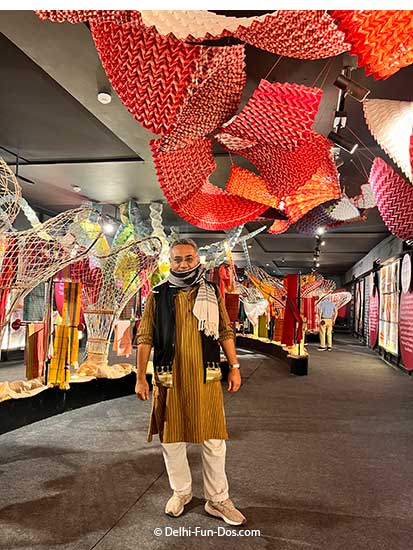
Various gamchha designers set up tables displaying their ware. Men’s and women’s wear made of gamchha were the most common items on sale. Given the upcoming summer season, when gamchha could be the perfect comfort fabric to wear, such clothes evoked a lot of interest. In addition, there were a variety of home linen, colourful throws made of gamchha swatches, rag dolls, folders, and book covers, and little gamchha pouches that made interesting additions for visitors to take back home. Some weavers offered live demonstrations of the weaving process so that we had a better understanding of the items around us.
But what blew our minds were the lamps and the art installations. The gamchhas were stitched and folded into interesting forms. Some of these pieces were designed as wavy lamp shades. Given the porous nature of gamchha, it was the perfect medium to transmit light. The resultant glow was mesmerizing. We also loved the origami-style folded gamchha artwork that were hung in the gallery. Everything when together lent an extremely breezy, light, and happy feeling, like how you feel when you have seen something ethereal.
The artwork was also a big nod to the versatility of the simple gamchha. Given that this fabric was so adaptive, it had survived the centuries and was still relevant.
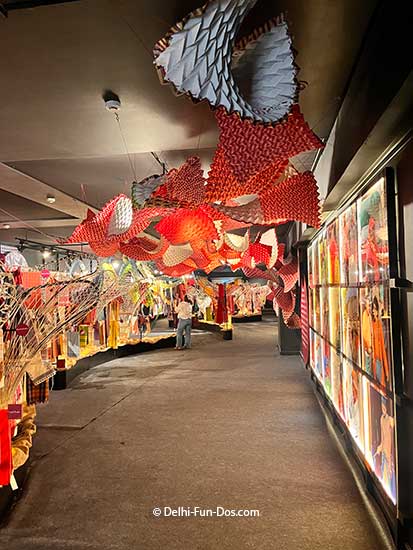
The “Gamchha: The Extraordinary in the Ordinary” exhibition not only honoured a simple yet significant piece of cloth but also highlighted its journey from a functional item to a fashion statement. The gamchha’s enduring appeal lies in its adaptability, cultural resonance, and the stories woven into its fabric. The exhibition brought forth such narratives to the visitors in Delhi. As designers and artists continue to draw inspiration from the gamchha, its legacy reminds us of the beauty that lies in everyday objects.
While we have seen and even bought gamchhas from local train vendors in Bengal, we were present to the vitality of the gamchha as a time-honoured tradition at the “Gamchha: The Extraordinary in the Ordinary” exhibition. When you buy the fuss-free gamchha, you are using a piece of cloth that is not only economical but also low-maintenance. It is an eco-friendly way of life and has no wonder survived centuries.



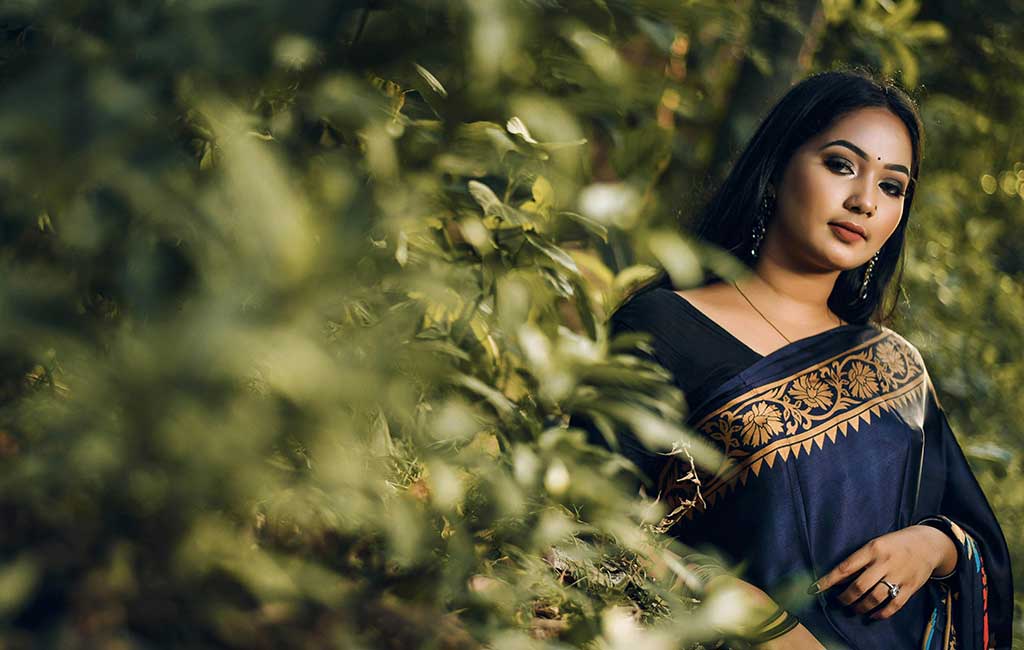
0 Comments